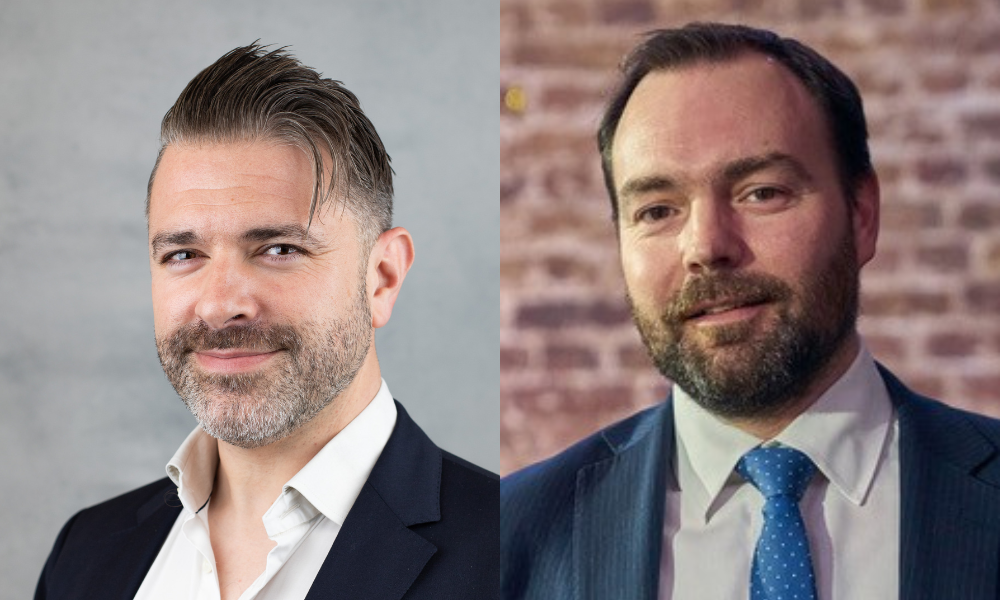

The UK has seen an influx of sunny weather with heatwaves reportedly on the way – but anyone with experience of living in the UK, will know how quickly a period of decent temperatures can be followed by heavy downpours and potentially even flooding.
Speaking on these drastic weather changes, Gareth Bowers (pictured top left), head of major loss at McLarens, argues insurers must prepare: “With the increasing prevalence of weather-related incidents, both in the UK and across the Globe, our industry has to be alive to changes in building regulation, effective repair methods and the efforts to become more sustainable when considering repair solutions.”
The Met Office echoes the prevalent effect of climate change, stating : “We keep seeing evidence that our climate is changing rapidly, with more extreme weather causing casualties, damage to infrastructure and businesses, and degradation of our natural environment.”
As climate volatility continues , claims processes are being adapted. Bowers explained: "More than ever, insurance company storm modelling is used to give early warnings to policyholders in certain areas, while there are investments in triage technology such as app or drone usage."
Collaboration is also essential in this process, Bowers stated. “Adjusting practices are also building flexible and agile resource teams ready to respond and travel to affected areas, and very close collaboration between the insurer, adjuster, disaster restoration and repair practices (including flood resilient and resistant repairs) can make a huge difference,” he said.
Parametric insurance is also gaining traction as a way of addressing climate volatility.
Discussing its role, Ola Jacob (pictured top, right), director at Global Parametrics, said: “Try explaining to a fourth-generation Somerset farmer that the cheque for his flood damage will arrive - eventually after the assessor comes, after the back-and-forth, after the mould's already grown through the flooring. Now, contrast that with this: with a flood trigger, the money to initiate the flood resilience plan is in their account by the end of the week.”
Jacob outlined its effectiveness across the world: “In Africa, a market with minimal insurance penetration, they liked the concept of a simple drought-flood parametric solution… Farmers received a mid-season parametric payout during an especially harsh year. That money enabled replanting before the season was lost. That’s not just coverage; it’s buying back opportunity.”

Paul Ramiz (pictured immediately above, left), associate partner, international parametric at Augment Risk echoes its potential: “It is a critical tool…. It will never be a panacea to the world’s problems, but where traditional insurance falls away, the parametric market has readily stepped into the gap...”
However, Ramiz argues there needs to be a framework: “The more data there is and the better its accuracy, then the best way to utilise it is to understand the underlying exposure. Parametric or index-based policies should be simple to understand while underpinned by complexity…using independent data, an agreed settlement agent, and a unifying policy wording that can be co-insured.”
Bowers, however, argues a careful approach, stating: “An element of concern .. would be that whilst payments to an agreed level may be swift, there is a danger the insured is left without the assistance of a loss adjuster to appropriately allocate those funds against the reinstatement. We can always see a need to assist the insured..
“A traditional indemnity model also allows for a personal approach where such matters as future resilient works …can be considered.”
Brokers are integral to tackling climate volatility.
Gethin Jones (pictured immediately above, right), executive director and co-founder of Skyline Partners, believes brokers have to adapt policies for their insureds’ individual needs: “For example, heat stress impacts dairy cattle. It can cause lower milk yields when the weather is hot. The parametric policy was structured to compensate for this.”
While brokers must adapt policies to meet emerging risks, Ramiz argues there also needs to be further education on parametric products: “There is still a critical education process needed for brokers in understanding parametric products, such as an event missing, or not paying out that could lead to an E&O claim.”
Client education is a crucial step: “via a commensurate premium, enhanced policy wordings allowing for risk improvement to be incorporated into repair works... the desire to incorporate changes primarily sits with the insured when repairs are completed,” Bowers stated.
